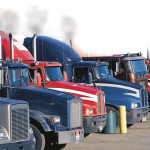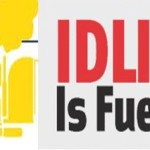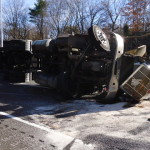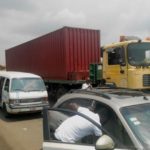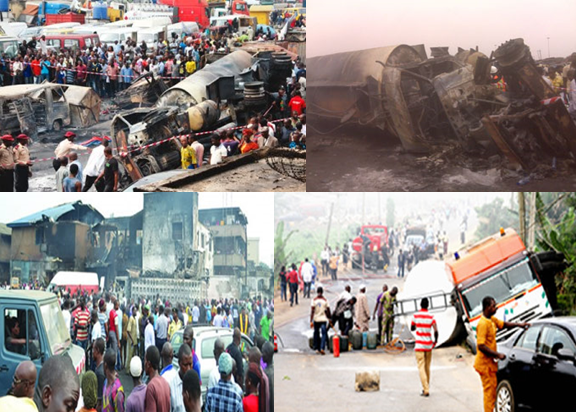
Four days, four petrol tanker accidents in densely populated areas of Lagos and one major fatality!
On the 8th of January, in Berger Suya, Apapa, Lagos at about 9.30-10pm, a petrol tanker fell, spilled its products and went up in flames leaving a trail of unimaginable loss of lives and properties.
On the 9th of January, around 2am, another fully loaded tanker fell at Iju in Ifako-Agege spilling its products but thankfully did not go up in flames. Same night, around Ajuwon close to Grail Movement premises another hit an electric pole, fell into a ditch and spilled its content but no fire outbreak due to the swift and proactive intervention of the fire service station close by.
On the 11th of January, between the hours of 5.00 and 5.30am somewhere in Ekoro, Abule-Egba Agege in Lagos, yet another hit a commuter bus, fell into a ditch, topped over an electric pole and spilled its products. Again and thankfully too, this one did not result in a conflagration.
As a matter of fact, the Director of Lagos State Fire Service, Mr. Rasaq Fadipe at the accident scene in Ekoro, Agege declared that “…this makes it the fourth tanker incident and one open back trailer on fire this week alone.”
But that of January 8th at Berger Suya is what we are bringing under our focus in this article.
THE BERGER SUYA PETROL TANKER EXPLOSION IN RETROSPECT
8th of January 2014 was another day of heartwrenching destruction of lives and properties; a day many would live to remember for a very long time to come. Carnage of unimaginable proportion offering a classic semblance of hell-on-earth was yet again unleashed on hapless citizens. When we penned down ‘Carnage on Our Roads: Understanding WHY Truck Brakes Fail and WHAT to Do’, we had privately wished that we wouldn’t have any reason whatsoever to put pen to paper to chronicle another detail of needlessly lost lives. But how wrong we were; for death and its twin brother of destruction and sheer waste came calling at a time many were still reveling in the ecstatic ambience of the New Year festivity most likely in their various villages. This time around too, it landed at a place that is very close to the heart of haulage operations in Nigeria; Berger Suya! (You may need to read up our article ‘When Berger Suya FAILS, Reman to the rescue’ to have a better understanding of how we came to this conclusion).
Typically, many variants exist as to the root cause of the accident and what and what were affected by the conflagration.
On how the incident occurred, the initial report that went out was that an overspeeding 33,000 litres capacity fully loaded petrol tanker lost its break, somersaulted and busted into flames. Another has it that the truck which had just been loaded from a barge in the neighbourhood developed fault along the way lost its brake, rammed into other vehicles and went up in flames from the impact. Yet another version reported that the fully loaded truck approaching from Kirikiri road toward the sharp bend connecting the Apapa-Oshodi express road came in a little too fast and went on its side why trying to negotiate the bend. The report went further to state that the trailer got damaged and spewed its content on the road which subsequently got ignited by the fire from the Suya (popular local grilled meat delicacy) seller’s broken lantern. The fire followed the trail of the gushing fuel and hence the spread of the damaging impact. We are inclined to go with the last version based on our own findings during a survey of the accident scene and additional eyewitness accounts gotten from nearby neighbours.
On the extent of loss, official account stated that 12-15 lives were lost, several buildings including the one housing a bank were completely razed down, several other vehicles were burnt and the injured ones were taken to various general hospitals. Unofficial report and various eyewitness accounts however claimed that many more lives (30+) were lost (they alleged that some loaded commuter buses were unfortunately trapped in the ensuing fire), over 60 shops got burnt, traders’ goods roughly valued in excess of N100million were totally destroyed. The account also alleged that the rapid intervention of Companies such as Julius Berger, Capital Oil and Gas and Swift Oil (whose fire fighting trucks had arrived the scene long before official response from relevant government departments) help ensure that the fire was put out in less than 2hours and thus preventing further spread to other properties.
Version context notwithstanding, certain non-assailable fact stares us in the face:
- A fully loaded wet haulage truck was involved
- Overspeeding was involved
- Negligence if not irresponsible driving habit was also involved
- Unguided approach to a dangerous bend was involved
- An unguided exposure of flame in a potentially combustible environment was involved
Speaking at the site of the accident while carrying out an assessment of the incident, the General Manager, LASEMA, Dr. Femi Oke-Osanyintolu, made a statement that paraphrases our thoughts in Haulage Report Now. He stated:
….what we have just witnessed is a man-made disaster…the disaster could have been avoided if we all had adopted some safety measures in what we are doing…if the owners of the articulated vehicle had put safety measures in place….if owners of affected shops had put safety measures in place…the extent of damage could have been curtailed…
While many are quick to point fingers at various arms of government for failing in their responsibility to provide good and motorable roads suitable for the advancement of individual and business goals, we also must acknowledge the fact that most often than not, a significant number of these accidents are traceable to our failings as either business owners or haulage professionals for either doing wrongly or not doing at all what we ought to be doing. For instance;
It is the obligation of haulage business owners to ensure that their vehicles are road-worthy before deploying them to our roads. In the same vein, it is also their responsibility to ensure that these trucks are fitted with some of the most advanced safety devices to either minimize the chances of spillage at the slightest tilting of the trailers or minimize the chances of combustion if per chance spillage do occur.
It is the responsibility of business owners to ensure that they comprehensively screen the quality and competence of haulage drivers before employment. Moreover, it is their responsibility to ensure that drug addicts or irresponsible drivers are not put in charge of articulated vehicles carrying some of the most lethal substance in the world like the highly inflammable petrol or gas.
It is the responsibility of even the most professional driver to exercise utmost due diligence on every road and take particular cognizance of the terrain on which they are travelling. A driver approaching a sharp bend at any speed other than a ‘rolling speed’ is definitely courting trouble!
It is also our responsibility as citizens to take particular interest in the immediate environment surrounding either our place of domicile or business operation. While it may sound funky having ‘Suya’ complementing the prefix ‘Berger’ to create a unique identity for an area, there is nothing funky in having naked fire littering an environment that provides business space for the largest concentration of tank farms/dumps containing several hundred thousand tons of highly inflammable petroleum products. Besides the tank farms, it must also be stated that not a day passes without several hundreds of fully loaded fuel tankers moving products in one direction or the other. As we stated earlier, please take special note that four (4) tankers fell over in 4 days with all spilling their products and only 1 going up in flames. And the one that went up in flames coincidentally happens to be the one at Berger Suya where the source of ignition was readily available!
Perhaps it’s about time that a special stakeholders meeting is conveyed in that axis to take a closer look at the nature of businesses that is allowed in that unique environment. Some businesses have no business being there in the first place; and if they must be there, special terms or conditions of operation need to be drawn up to properly mitigate the risk they portend to the multi-million dollar oil and gas investment in that neighbourhood. God forbid a disaster befalling any of the tank farm located in that neighbourhood! The social, economic, environmental and ecological impact is better left to the imagination. A stitch in time, they say, saves nine!

